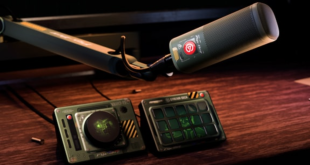Very few digital cameras offer excellent low light sensitive. You often need to spend thousands to get a camera such as the Nikon D3S which can take excellent quality images with very low noise in the worst lighting conditions. Ever had camera ‘shake' when taking a picture indoors without a flash? Most of us have. This may change in the future thanks to Swiss researchers who have developed a molybdenite light sensor which they say is five times more light sensitive that current technology.
Each pixel of the semi conducting silicon of a standard light sensor generates an electrical charge in response to exposure to light. The camera then collates all those charges into a single image. The Molybdenite requires much less light energy than silicone in order to produce a charge.

An Ecole Polytechnique Federale de Lausanne (EPFL) team which was led by Professor Andras Kis have developed a prototype light sensor which uses a single atom thick layer of molybdenite instead of silicon. They found out that a single pixel on the sensor produced a charge using 20% of the light energy required by a pixel on a silicon sensor. Molydbenite is naturally abundant and quite inexpensive.
Kis said “Our main goal is to prove that MoS2 [molybdenum disulfide] is an ideal candidate for this kind of application. It would make it possible to take photographs using only starlight.”
You can read more on this, over here.
Kitguru says: This could dramatically change low light photography in the future without adding a huge cost to the price of the camera. Fingers crossed.
 KitGuru KitGuru.net – Tech News | Hardware News | Hardware Reviews | IOS | Mobile | Gaming | Graphics Cards
KitGuru KitGuru.net – Tech News | Hardware News | Hardware Reviews | IOS | Mobile | Gaming | Graphics Cards


